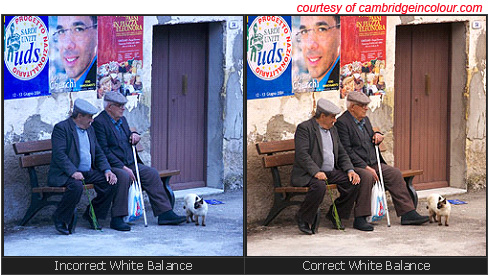Technical Advantages of RAW and JPEG
Other than enhanced control over the process are there technical reasons for shooting RAW instead? A few years ago we would have proclaimed a resounding "Yes" to answer this question. Demosacing requires a lot of processing power, and just a few years ago you could easily demonstrate that RAW shooting and computer processing provided higher resolution images than those that could be produced "in-camera".
The answer to this question today is not as clear. With each generation of new cameras that truth becomes less the case. DSLR processing power has been growing by leaps and bounds, and we have now reached the point where JPEG images from the Nikon D300 and Olympus E-3, for example, actually test higher resolution that the RAW images they capture. Processing power continues to get cheaper every day and this old argument for RAW instead for highest resolution is disappearing as processing power and in-camera software sophistication continue to grow.

One area where RAW still has tremendous value is the area of white balance control. Despite the phenomenal improvement in digital imaging overall, auto white balance still seems a mystery function in many of the latest DSLR cameras. White balance is part of the JPEG processing and it is often difficult to precisely adjust White Balance in a JPEG after the fact. With RAW images, however, correcting White Balance or completely shifting it for creative impact is a very easy task in most RAW software like Adobe Photoshop RAW.
One very significant drawback of RAW is that the quality of RAW conversion is totally dependent on the software that is used for RAW conversion. Many programs are too "universal" in scope to squeeze the most from any particular camera's RAW images. Other programs are closely tied to a particular camera (like those that come with DSLR cameras) and this "home-grown" software is sometimes lacking in options and image-processing sophistication. RAW processing software is definitely improving and the trend line is clearly toward better and more useful solutions.
The other huge disadvantage of shooting RAW is time. A JPEG file is immediately ready to use in some form; a RAW file requires some post-processing to even see the image.
Many pros and hobbyists shoot JPEG + RAW when results are crucial. This allows the option of the easy to use JPEG when it gives the photographer what they need and the RAW image for thoughtful manipulation when the JPEG fails to deliver the result or the photographer wants more control over the finished image.
While processing power is growing rapidly in digital cameras it is still true that the digital camera is not nearly as powerful as a computer as your desktop or notebook computer. Thus the digital camera makes compromises to speed processing and image conversion that might not be made if more processing power were available. This is both a negative as well as a plus. You can be sure that the in-camera processing is very efficient and specifically tailored to your sensor and possibly your lens if the lens contains a ROM (like all Olympus lenses and many other electronic lenses from other makers). The desktop computer definitely has more power, but image processing from RAW means the conversion is still dependent on the quality and flexibility of the software used for that conversion process.










22 Comments
View All Comments
Wesley Fink - Tuesday, May 20, 2008 - link
The third page is there. We have been having server problems today and this article went to post twice when it was scheduled to go live on 5/20. You may have been caught in one of those accidental post cycles. We apologize for the confusion.Bull Dog - Tuesday, May 20, 2008 - link
Yea. Right after I posted the comment I realized that the entire article was gone; so I figured the article must have not have been ready for prime time.Very good read, a little of it is above/beyond me, but a good read none the less. Thanks.